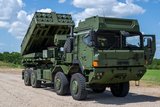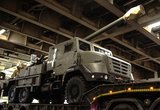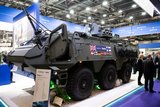US Army Natick Soldier Center awards Lockheed Martin contract to perform Hulc user testing
Lockheed Martin has received a $1.1 million contract from the US Army Natick Soldier Center for test and evaluation of its next-generation Hulc advanced robotic exoskeleton, designed to augment Soldiers' strength and endurance, as well as reduce load carriage injuries.
Under this contract, the US Army will test Lockheed Martin's advanced ruggedized Hulc design. The upgraded Hulc system includes optimized control software, extended battery life and human factors improvements for quicker and easier sizing to each user. Lockheed Martin is also exploring exoskeleton designs to support industrial and medical applications.
"The tests performed on Lockheed Martin's Hulc system will help us assess the current state of the technology," said David Audet, US Army Natick Soldier Research, Development and Engineering Center, which awarded the contract. "Exoskeletons have the potential to reduce stress on the body from heavy loads."
Dismounted Soldiers often carry heavy combat loads that increase stress on the body, leading to injuries and exhaustion. Hulc is designed to transfer the weight from heavy loads to the ground through the robotic legs of the lower-body exoskeleton, taking the weight off of the operator. An advanced onboard micro-computer ensures the exoskeleton moves in concert with the operator. Hulc is an un-tethered, battery powered, hydraulic-actuated anthropomorphic exoskeleton capable of performing deep squats, crawls and upper-body lifting with minimal human exertion.
"We recognize the importance of perfecting the exoskeleton technology to redefine what is possible for our Soldiers," said Rich Russell, director of Sensors, Data Links and Advanced Programs at Lockheed Martin Missiles and Fire Control. "Hulc will meet Warfighters' future mobility and sustainment needs. Working with the Natick Research Center to evaluate the system will further enhance our ability to meet our customer's needs and requirements."
Researchers at Natick Soldier Center will evaluate how the Hulc affects Soldiers' performance. Additionally, biomechanical testing will measure the energy expended by a Soldier when using the Hulc. The laboratory testing will also assess how quickly users learn to use the Hulc system when carrying various loads and moving at various speeds. The contract includes options for field trials to test the system's utility in operational environments.
Source: Lockheed Martin
























